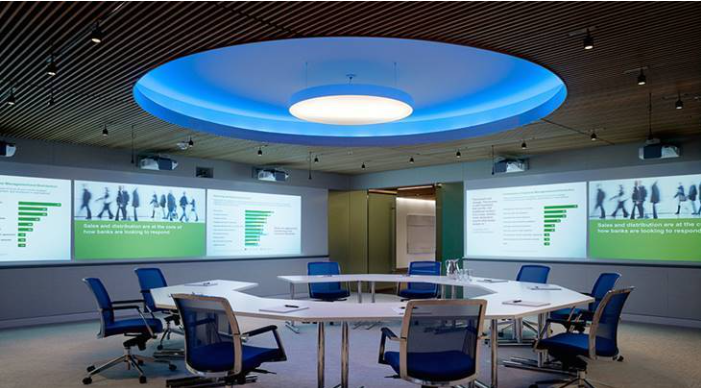Top 10 AV Trends with Dan Jackson of Crestron

May 13, 2020
Audio Visual
This week we are talking about the Top 10 Pro AV trends identified by Crestron and presented by Dan Jackson, Senior Director for Digital Workplace Products, Crestron.
“There are decades where nothing happens and weeks where decades happen”
Dan introduces the influence of the current global coronavirus pandemic on these trends. At no other time in history has the world looked to digital collaboration and connectivity systems in an effort to sustain a new hierarchy of needs which will continue to change how we work.
Here we introduce the top trends Dan discusses in the webinar and over the next few weeks, we will take some time to explore these trends in greater detail and discuss the technologies that are leading them.

- Touchless Rooms – New practices will be introduced around cleaning touch surfaces and enabling touchless technology. With rooms being fully automated presence sensors will awaken the AV technology and the integrated building services. In this scenario, wireless content sharing becomes a necessity via AirMedia2 type applications.
- Flexible Workspace – Every room greater than 12 seats will be a flexible space, permitting the movement of desks and technology to suit the changing needs of the workspace.
- USB-C – In 2019 USB-C ports overtook HDMI in new laptop production.
- USB – Is as important as audio and video, for AV routing. This familiar connection system has elevated AV to the “plug and play” standard we know today.
- UC and AV, better together – UC enables the remote connectivity into the room, AV integrates the systems in the room. Two sides of the one coin!
- Native room systems or Bring Your Own Device (BYOD) – Or both? Many collaboration spaces now have hardware with “one-touch to join” native tools like Microsoft Teams, Zoom or Webex, perhaps now people will now prefer to bring their own devices to connect and collaborate.
- AV as a service (AVaas)- Consider how often you have to update your phone and laptop or desktop OS, if your connectivity solutions are cloud-based, how often will you have to update the firmware on the devices in your workspaces to make the most of the cloud services you are paying for? Simply put, if you have a large device set, you’re going to need ongoing service and technical support.
- API – Can be accessed anywhere on the network, using system data to execute automated processes efficiently.
- Standardised Development Languages – This alone will increase the programming resources for the industry by millions.
- ProAV Taking full advantage of the network – Much simpler physical infrastructure with fewer components, with virtualised applications providing greater scalability.
Over the next few weeks, we will take some time to explore these trends in greater detail and discuss the technologies involved.

Reach out to us today to discover our innovative solutions and discuss your specific needs.
Together we can transform your building into a smart, efficient and sustainable space.
Related news

Talk to
Our

Team
Use the form below to drop us an email, or use the chat function on the bottom right corner to speak with us directly.





%201.png)

